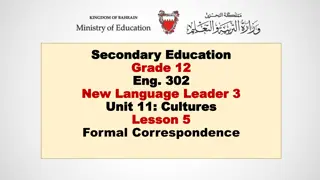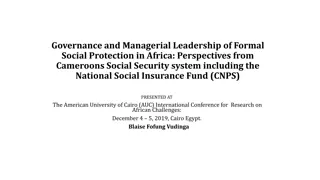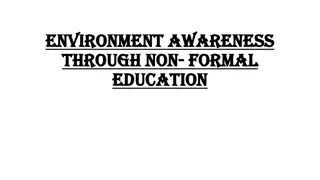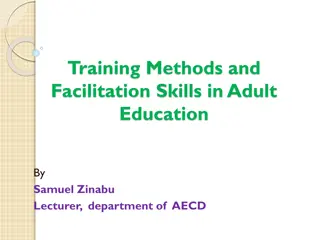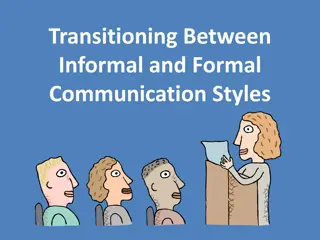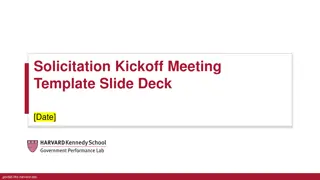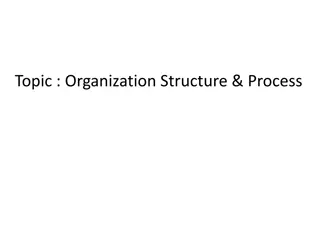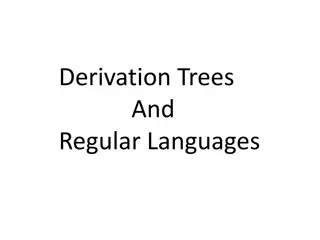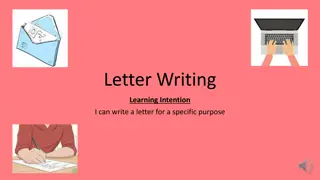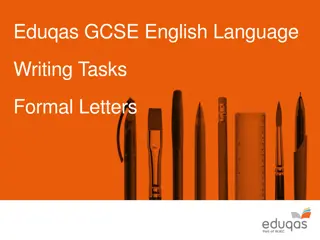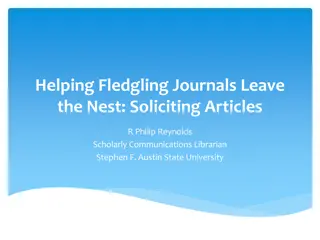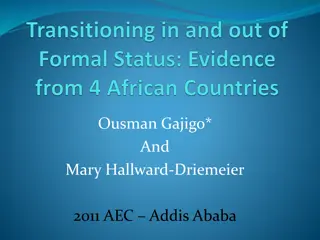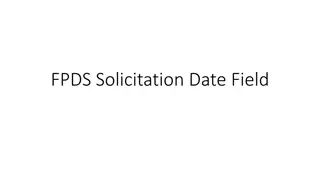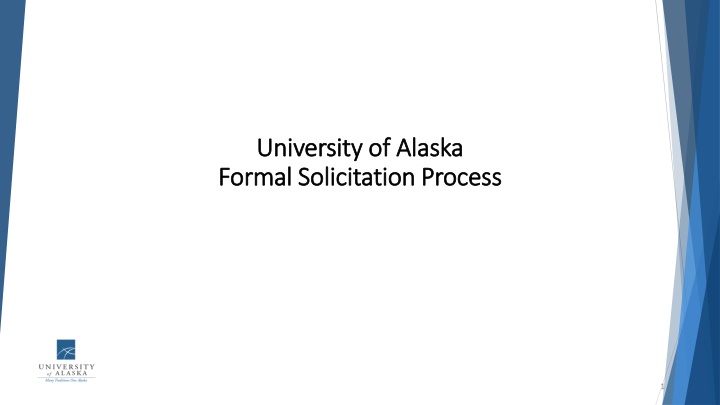
University of Alaska's Formal Solicitation Process
Learn about the formal solicitation process at the University of Alaska, including what formal solicitations are, guidelines that govern the actions, types of formal solicitations, and the difference between Invitation for Bid and Requests for Proposals. Discover how the University follows specific policies to ensure a competitive and fair procurement process.
Download Presentation

Please find below an Image/Link to download the presentation.
The content on the website is provided AS IS for your information and personal use only. It may not be sold, licensed, or shared on other websites without obtaining consent from the author. If you encounter any issues during the download, it is possible that the publisher has removed the file from their server.
You are allowed to download the files provided on this website for personal or commercial use, subject to the condition that they are used lawfully. All files are the property of their respective owners.
The content on the website is provided AS IS for your information and personal use only. It may not be sold, licensed, or shared on other websites without obtaining consent from the author.
E N D
Presentation Transcript
University of Alaska University of Alaska Formal Solicitation Process Formal Solicitation Process 1
What are Formal Solicitations? What are Formal Solicitations? Formal solicitations are required for competitive processes which will result in a contract value greater that $100,000. Formal solicitations are the most structured; with Statutory requirements for public notice, length of competition, and award notices. Due to the required competition and notice requirements, formal solicitations take the greatest amount of time to complete. 2
What Guides our Actions What Guides our Actions The UA follows the following policies for procurements: BoR Policy 05.06 Procurement and Supply Management AS 36.30 State of Alaska Procurement Code 2 CFR 200.318 through 200.326 OMB Guidance for Grants and Agreements Local policies, tribal laws and regulations where applicable NOTE: Where there is a conflict between procurement requirements, in almost all cases, the more stringent requirement shall apply. 3
Types of Formal Solicitations Types of Formal Solicitations There are two types of formal competitive solicitations: Invitation for Bid Requests for Proposals 4
Invitation for Bid Invitation for Bid Invitation for Bid (IFB) used to be the predominate formal solicitation method. In an IFB the University states its requirements and the bidders provide their price. There is no opportunity to take exception to the University s terms or requirements. The bidder must comply and the lowest responsive, responsible bidder wins the award. This methodology may be used when purchasing commodities or equipment where the specifications are clear. However, due to its lack of flexibility, it is rarely used for services or anything that has a implementation, training, or unique development component. 5
Requests for Proposals Requests for Proposals Requests for Proposals (RFP) are used for solicitations where factors other than low price must be evaluated in order to ensure that the University selects the correct vendor. The RFP process permits discussions with offerors and may allow changes in their offers, including price, after proposals are opened. It also allows comparative, and qualitative evaluations, negotiation, and Best and Final offers to be made in determining award of a contract. These factors may include Consideration of relative abilities of offerors to perform. Evaluation may include degrees of quality or degrees of technical or professional experience or expertise. Weighing intellectual, artistic, or aesthetic values to the extent that price is a secondary consideration. Supplies, or services may require the use of comparative and qualitative evaluations. Discussions with offerors or demonstrations of ability may need to be conducted concerning technical, price or other aspects of the offers. Offerors may need to be afforded the opportunity to revise their offers. 6
Request for Proposal Types Request for Proposal Types Low Price Technically Acceptable Source Selection Trade Off Method (Best Value) 7
Low Price Technically Acceptable RFP Low Price Technically Acceptable RFP A low price technically acceptable (LPTA) RFP is in many aspects similar to a bid. It is used primarily for commodities and equipment and the University specifications are clear and less flexible. Specifications must include a list of required specifications or characteristics that must be met by the product being offered. Proposers only need to provide their price and enough information for the University to determine that the product being offered is technically acceptable. Proposals are opened after receipt, by the procurement officer. The low price proposal is forwarded to the evaluator (this may be an individual rather than a committee) and a determination is made whether the items proposed are technically acceptable. If so, an award decision is made, if not the next low price offer is provided to the evaluator for review. This process continues until a technically acceptable product is identified. Since it is not necessary to perform an evaluation of all proposals, LPTA is usually the quickest to evaluate. 8
Source Selection RFP Source Selection RFP A source selection RFP process is used when the purchaser desires both weighted technical and price criteria in order to determine which proposal best meets their needs. An aggregate score resulting from evaluation of weighted price and non-price criteria forms the basis for award. A committee selected by the project leader, and approved by the procurement officer, conducts the scoring and evaluation of proposals against technical factors as described in the RFP. Each factor is weighted and the scores are multiplied by the weight. The procurement officer reviews the price proposals and scores them using a proportional formula whereby the lowest price proposal receives the maximum points for price and the other proposals receive proportionally lower price scores based on their additional cost. These scores are then multiplied by the weight assigned for price. At the conclusion of the scoring, the technical and price scores for each proposal are combined and the highest scoring proposal receives the award. 9
Trade Off Method RFPs Trade Off Method RFPs A trade off method RFP (also known as best value) is used for projects where there needs to be an ability to compare technical and price factors in different proposals against each other. This is different from a source selection solicitation where proposals are only compared against the evaluation criteria and University requirements. For trade off method, only the technical criteria are weighted. Proposals are scored in a similar fashion to source selection. A committee selected by the project leader, and approved by the procurement officer, conducts the scoring and evaluation of proposals against technical factors as described in the RFP. Each factor is weighted and the scores are multiplied by the weight. At the conclusion of the technical scoring the proposals are ranked with highest scoring proposal receiving the highest ranking. The procurement officer reviews the price proposals and also creates a ranking with the lowest price proposal receiving the highest ranking. The ranks are then compared and, if the highest ranked technical proposal offers the lowest price they are determined to be the best value and selected for award. If not, then the committee conducts a series of paired comparisons to determine if the additional functionality of a higher ranked technical proposal is better value than a lower priced proposal. 10
Other facts about RFPs Other facts about RFPs An RFP is a negotiated procurement. The University can negotiate with one or more proposers during or after the evaluation process. RFPs often require clarifications and discussions with proposers. The University may change its requirements based on what it learns during the RFP process. RFPs often include presentations or site visits. The University may elect to seek best and final offers. THESE THINGS TAKE TIME. 11
Formal Solicitation Steps Formal Solicitation Steps Development Issuance and Response Evaluation Notice of Intent to Award Contract Negotiation 12
Solicitation Development Solicitation Development Bring Procurement in early. The sooner a procurement officer is involved in the project the sooner a realistic acquisition timeline can be established. Do your market research to determine what it is you need. The more you know about what it is you want the cleaner and quicker the solicitation process. Come into the project with a well thought out, mature scope of work. (What exactly do you need?) What do you need to see from a proposer to determine their ability to meet your need? What evaluation factors are important to you and how would you weight them? If a purchaser comes in with a good scope, submittal requirements, and evaluation factors a formal solicitation can be put together in a couple of weeks. If not, this part of the process takes a month or more. 13
Issuance and Response Issuance and Response BoR policy and State statute require that a formal solicitation be on the street for a minimum of 21 calendar days. In many instances the complexity of the project requires that a IFB/RFP be open for 30 days or more. If a pre-proposal conference is required then the IFB/RFP will likely be open longer. If an amendment is issued, either because we change what we want or we said something incorrectly, the submittal deadline will need to be extended. Also note that if the solicitation is issued during a period where the University is closed for a significant time (such as the holiday closure) then additional time must be added. 21 to 30 days is a reasonable expectation for the issuance and response period. 14
Evaluation Evaluation Evaluation of IFBs and LPTA RFPs are normally the quickest. Note that there are still items that must be verified before an award is announced (such as verification of business license, insurance, and subcontracting). A notice of intent to award can generally be issued within 5 business days. For source selection and trade off method RFPs, the evaluation is significantly longer. One factor that the purchaser controls is the size and members of the evaluation committee. The recommended size is 3-5 members. The evaluation process requires a great deal of reading and multiple meetings. Each person added to the committee beyond 3-5 makes it exponentially more difficult to schedule meetings and stay on schedule. Keep the group tight and make sure that the people selected are committed to doing the work and meeting the timeline. After the submittal deadline the proposals are reviewed by the contracting officer to ensure that they have met all of the administrative requirements. If there are a large number of proposals this can take a few days. All administratively responsive proposals are then forwarded to the evaluation committee. A kickoff meeting is scheduled and members are asked to certify that they will do the work and have no conflicts of interest. After the committee has read all of the proposals, subsequent meetings are scheduled for discussions and scoring. Presentations, site visits, and BAFOs may be needed. Once scoring is complete members sign a memorandum of selection confirming their consensus for award. The evaluation process can be as short as 2 weeks but is generally closer to 4 to 6 weeks if any of the additional steps are required. 15
Notice of Intent to Award Notice of Intent to Award BoR policy and State statute require that a Notice of Intent to Award be provided to all interested parties. Award can be made no sooner than 10 days after the notice is issued. During this period, proposers can request a debrief about the scoring and the process. They may also request notes or other documentation. Similar to the RFP issuance period, if the 10 day notice of intent is issued during a period where the University is closed then the time must be extended. Lastly, proposers have the right to protest the award during the 10 day period if they have reason to believe that the award was improper. This may or may not delay the award depending upon the apparent merit of the protest. While it can be longer, this period generally does not exceed the required 10 days. 16
Contract Negotiation Contract Negotiation IFBs and LPTA RFPs leave little or no room for contract negotiation. Contracts are normally issued within a few days after the notice period. Other types of RFPs take considerably longer to negotiate. While we can t sign a contract during the 10 day notice period it often helps to send a draft to the apparent contractor for review. Many companies include exceptions to our terms and conditions in their proposals and these can take significant time to negotiate. In rare instances the Office of the General Counsel has to become involved. Contract negotiation times are hard to estimate but generally last between 1 and 3 weeks. 17
Conclusions Conclusions If you add up all of the times estimates on the previous slides you can see why we tell purchasers 45 to 60 days for formal solicitations. Though please keep in mind that our first question is always, When do you need it? . Procurement will work with you to design a process that delivers your good or service on time. But there are things that purchasers can do to minimize the rubs in the process. Contact us early. In many instances we can provide a sample of a solicitation that will help a purchaser understand what they need to do. Do your research so you know what you need. Using the RFP process to figure out what you need usually results in a messy solicitation. A good scope of work and realistic evaluation criteria almost always result in a project needing the shorter time estimates at each step. Keep your evaluation committee manageable. We don t need a cast of thousands to make these decisions. We just need a few committed stakeholders. 18
Questions? Questions? 19


